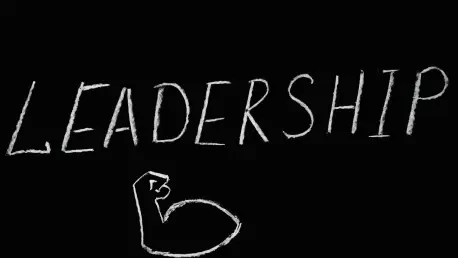In today’s rapidly changing corporate landscape, a fundamental transformation is taking place, necessitating that businesses re-evaluate their leadership strategies to maintain competitiveness. This shift is driven by technological advancements, demographic changes, and the evolving expectations of both consumers and employees. Modern businesses must now prioritize inclusive leadership development as a core element of their strategic planning. This approach not only ensures long-term success but also fosters a culture that reflects our diverse society. As organizations navigate this transition, they are tasked with overhauling outdated practices and making conscious efforts to create a workforce that is representative of the communities they serve.
The urgency for inclusive leadership arises from several factors. With more than 1.7 million people having left the workforce since February 2020, many companies find themselves facing significant leadership gaps. Additionally, the continuous infusion of artificial intelligence and other technological advancements means that the skill sets required for future leaders are constantly evolving. In response, businesses must adopt comprehensive and inclusive leadership models that embrace ongoing development and equip leaders with the skills necessary to thrive in a world where two-fifths of job tasks may soon be transformed or outdated.
The Business Case for Inclusive, Continuous Leadership Development
Developing inclusive leadership is not just a moral imperative but also a strategic business priority. Organizations that foster an environment of continuous leadership development tend to see higher employee engagement and productivity. According to research conducted by Gallup, companies that invest in their employees’ growth are twice as likely to retain their workforce compared to those that do not. This translates to substantial cost savings and efficiency gains, as the organization optimizes its current talent pool without the need for constant recruitment.
Underrepresentation in leadership roles is another critical concern, with many demographic groups still not being fully tapped for their potential. Women, for instance, comprise nearly half of the workforce yet remain significantly underrepresented in high-level executive positions, holding a mere 11% of CEO roles in Fortune 500 companies. This disparity indicates that organizations may be overlooking valuable insights and expertise. By addressing the unique needs of diverse talent pools, companies can unlock untapped potential and ensure they are making use of the full spectrum of available talent, rather than excluding certain groups from leadership opportunities.
Creating a culture that supports inclusive leadership requires intentional commitment and strategic planning. Implementing flexible and immersive learning pathways allows employees to engage with personalized development experiences that prepare them for leadership roles. Moreover, utilizing data-driven strategies and scalable solutions facilitates comprehensive tracking of progress and outcomes, ensuring the programs’ effectiveness. Organizations that successfully integrate these practices into their development frameworks are better positioned to withstand market shifts and lead their industries into the future.
Laying the Groundwork for Inclusive Leadership
Successfully establishing a foundation for inclusive leadership development demands deliberate planning and dedication from all organizational levels. This entails cultivating an inclusive work environment that respects and values diverse perspectives and experiences. Such an environment ensures that every individual feels supported and appreciated, thereby fostering a culture where future leaders can emerge and thrive. Embracing diversity of thought enriches decision-making processes and contributes to more holistic business strategies.
A well-designed leadership development program aligns with an organization’s broader business objectives. Clear articulation of how leadership initiatives connect to overall corporate goals is essential for achieving desirable outcomes. When leadership programs are seamlessly integrated into the business strategy, organizations can better gauge their effectiveness. At SHRM Linkage, for example, the four-pronged approach to talent optimization serves as an effective blueprint. This model comprises research, assessment, planning, and monitoring, providing a structured methodology for inclusive leadership development integrated within the organization’s transformation efforts.
The commitment to fostering inclusive leadership also involves seeking expert guidance to objectively assess existing leaders and develop unbiased action plans. This approach helps illuminate the gaps in current practices and ensures that development pathways are customized to meet specific organizational needs. By partnering with knowledgeable professionals, companies can craft leadership strategies that enhance strategic direction and drive business growth. The ultimate goal is to create a robust leadership pipeline that will fuel organizational success in the years to come.
Embedding Inclusive, Continuous Leadership Development in Organizational DNA
In the fast-evolving corporate world, companies must rethink leadership strategies to stay competitive. This change is driven by technological progress, demographic shifts, and the changing expectations of consumers and employees. Businesses now need to make inclusive leadership a priority in their strategies. This is crucial for ensuring long-term success and nurturing a culture that mirrors our diverse society. As companies manage this transition, they face the challenge of revamping old practices and actively working towards building a workforce that reflects the communities they serve.
The need for inclusive leadership is urgent, influenced by several factors. Over 1.7 million workers have exited the workforce since February 2020, creating notable leadership gaps. Furthermore, the rise of artificial intelligence and other technological innovations continuously alters the skills future leaders will require. Businesses, therefore, must adopt inclusive leadership models that focus on ongoing development, preparing leaders to excel in a world where two-fifths of job tasks may soon be outdated or significantly altered.









